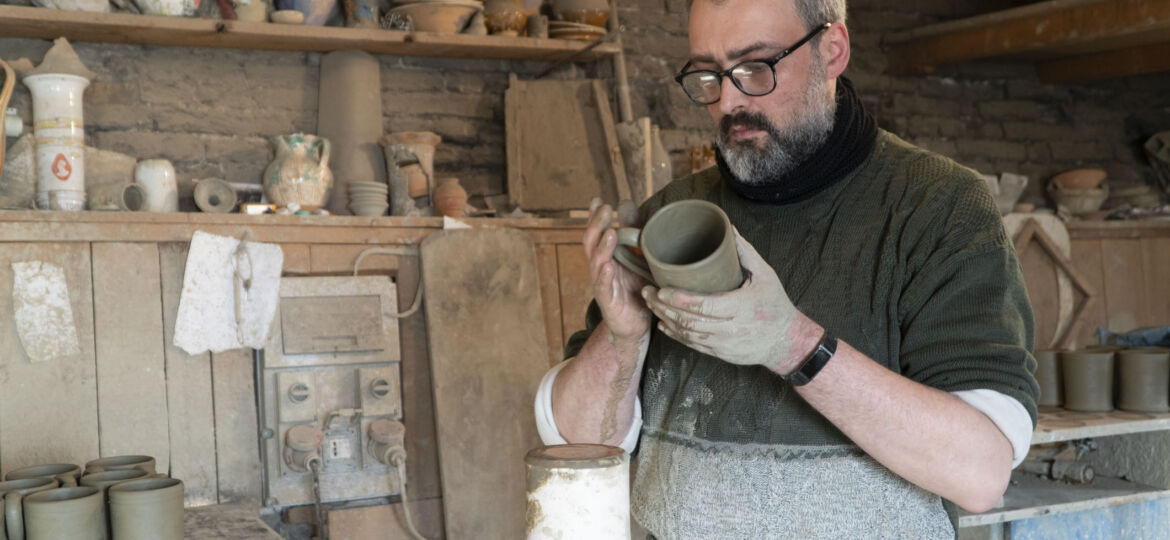
The production of pottery and earthenware requires long and painstaking work on the part of the potter right from the processing of the clay, which will then be prepared for manipulation on the potter’s wheel.
Whether in the production of impasto pottery, made from the processing of coarse and mixed clay, for objects of daily use, such as in the kitchen, or in the creation of figuline pottery, which is more refined and decanted, and reserved for fine objects, the potter needs to engage in initial clay refining, which includes the steps of settling, comminution, flaking and tanning.
Only after such preliminary operations is the clay ready to be worked on the potter’s wheel: this is where the actual creative phase of the potter’s work begins.
This manipulative work requires not inconsiderable skills, acquired through years of experience. Both strength and gentleness are needed, and of course dexterity and manual dexterity.
Force is used to keep the clay in the center of the plate as the lathe rotates. Uncommon skills are essential to be able to “pull” the clay to an optimal thickness so as not to cause asymmetry or dismemberment in the material. Delicacy is essential to complete and finish the object.
The craftsman must then wait for theclay to dry before he can attach handles or spouts to the object, which are necessary for the use of many household dishes and utensils. Controlling the drying, the potter waits for the moment that can promote the best adherence of the separately molded pieces.
The subsequentengobe operation leads to thefinal drying of the object and its preparation for the final creative act of coloring, before the firing of the artifact.
In the coloring, the recognizable touch of the potter emerges as at no other stage, who has been decorating his creations for centuries with a simple and aesthetically pleasing style that responds to canons of functionality and composure, and reflects the decorative motifs typical of tradition.
Pictured is the potter’s work at the historic Bottega Bozzi in Montottone, FM.

